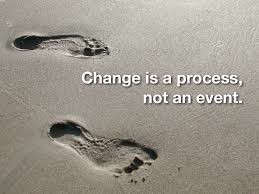 If you ask someone if they like their job, truthfully of untruthfully the majority of the time they are going to say they love or like their position. But just how often are we actually being truthful? Where my parents have stayed in the same career their entire work lives, I have changed careers and jobs frequently throughout my relatively short time in my work because I was bored and needed something new to inspire me. However, I know many people (professionally and personally) who have stayed so long in an occupation they despise, that they have lost touch with what they are motivated to spend 40 hours/week and 52 weeks/year doing. They go to work for the paycheck and hate every minute of it!
If you ask someone if they like their job, truthfully of untruthfully the majority of the time they are going to say they love or like their position. But just how often are we actually being truthful? Where my parents have stayed in the same career their entire work lives, I have changed careers and jobs frequently throughout my relatively short time in my work because I was bored and needed something new to inspire me. However, I know many people (professionally and personally) who have stayed so long in an occupation they despise, that they have lost touch with what they are motivated to spend 40 hours/week and 52 weeks/year doing. They go to work for the paycheck and hate every minute of it!
I participated in a workshop with Mr. Michael Kerr in June 2016 on creating inspiring workplaces/cultures and he addressed the topic of the “Six Powerful P’s of Motivation and Engagement”. Though his lecture was on workplaces, these concepts are also applicable to the individual and may be particularly important to our clients (or even ourselves) who are so dissatisfied with their career that this dissatisfaction has crept into their personal lives, perhaps even in the form of mental illness.
1) Passion: The destination. If they could have any position, what would it be? Finding passion may take some real digging and involves exploring core belief systems to determine what it is that your client is truly driven by, what do they ultimately want in a job?
2) Purpose: If passion is the destination, purpose is the journey toward that destination. The purpose is building the pathway towards their passion. The tasks they complete and the challenges they maneuver to “follow the yellow brick road” to their purpose.
3) Progress: Achievement. This concept involves creating measurable short term goals so that they can acknowledge the actions they have taken toward reaching their passion. Acknowledging their achievements, creates motivation to continue on the purpose/journey toward the purpose/destination.
4) Pride: The engine. Pride is an intrinsic motivator which fuels the journey and keeps your client’s moving along their path towards their purpose.
5) Play: This adventure should be fun!!!Any change throws the equilibrium off balance which is not always fun and can be downright stressful. However, when your client is working towards their passion, they should be enjoying the path to get there. If they aren’t, perhaps they haven’t dug deep enough into their core beliefs to find their true driving force.
6) Personal: To cultivate daily motivation to make changes in their life, the journey should be theirs and theirs alone. Not a journey they “should” take but one they have chosen to take. If they “own” the journey, their motivation will continue despite being met with challenges/obstacles along the way.
*The views expressed by our authors are personal opinions and do not necessarily reflect the views of the CCPA

